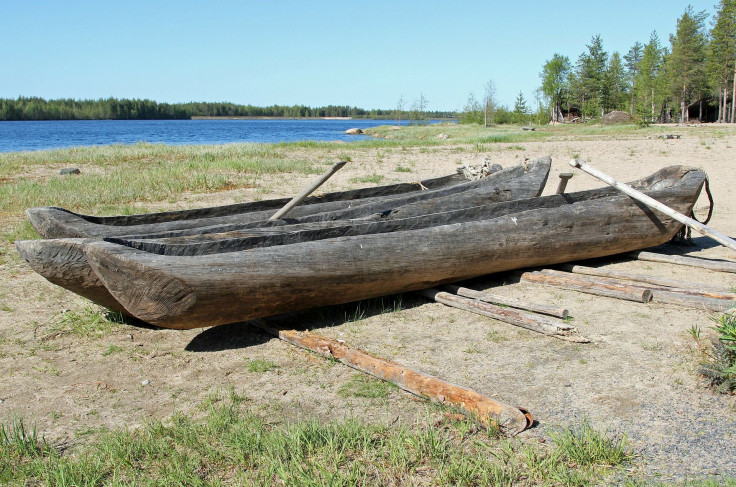Did America’s First Immigrants Travel By Land Or Sea? Scientists Weigh In

The first humans to settle the Americas might have been sailors, and Earth’s prehistoric environment would have kept them alive as they floated along the coasts and looked for new places to make their homes.
Some researchers are arguing that dense growths of kelp in shallow waters that attract other marine creatures would have provided the travelers with plenty of food during their migrations. Those “kelp forests” are found in many Pacific coastal areas — including places that contain some of the earliest evidence of human settlement in North and South America.
“Recent work along the Pacific coastlines of North and South America has revealed that these environments were settled early and continuously provided a rich diversity of subsistence options and technological resources for New World hunter-gatherers,” their paper, published in the journal Science, explains.
The authors call for more investigation into offshore areas that might hold evidence of these early human migrations. That’s a potentially tricky task because sea levels are higher today than they were all those thousands of years ago, and thus the coastal areas the ancient humans would have inhabited are now underwater.
The idea that America’s first settlers came by sea is one that has begun to gain some traction after scientists’ sole theory for many years was that they traveled along the Bering Strait, a land bridge connecting Siberia to Alaska that is now underwater. That would have happened in the neighborhood of 13,500 years ago, with those settlers, referred to as the Clovis people, quickly spreading throughout the continent and down to South America, and there is evidence of their hunter-gatherer lifestyle stretching back that far. But there have also been discoveries in the last few decades that appear to be evidence of human settlement predating the first Clovis migration, some of them by a few thousand years.
Earlier this year, for example, archaeologists reported artifacts collected from a settlement in Peru that were about 15,000 years old and showed signs of a fairly advanced culture. They found stone tools, handwoven baskets and the remains of food that had been cooked with fire. The food itself, which included a variety of marine creatures, suggested the people had sturdy boats.
“North America’s coastlines and their rich marine, estuarine, riverine and terrestrial ecosystems were peripheral to the story of how and when the Americas were first settled by humans,” the paper notes.
The authors want scientists to dig deeper into the underwater areas to gather more information.
Boats might sound like advanced technology but primitive boats have been around for at least several thousand years. The Pesse canoe is the oldest vessel that remains today, built about 10,000 years ago. It was a dugout canoe, made by hollowing out a tree trunk. Rock carvings have indicated that other boats, including more sophisticated ones, existed even earlier than that.
The prehistoric people who first settled the Americas could have traveled by boat “because of what has come to be known as the kelp highway — kelp forests growing just offshore,” according to a report on the research. “All that kelp … would have provided a rich habitat for sea creatures upon which hearty travelers could feast.”
© Copyright IBTimes 2024. All rights reserved.




















